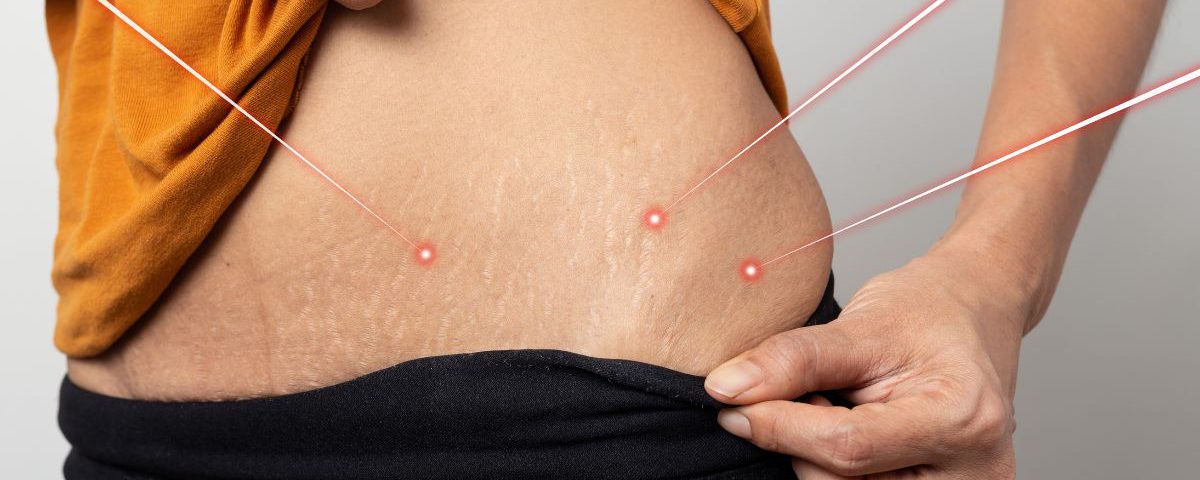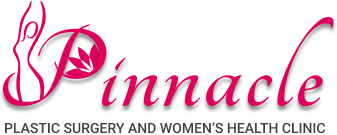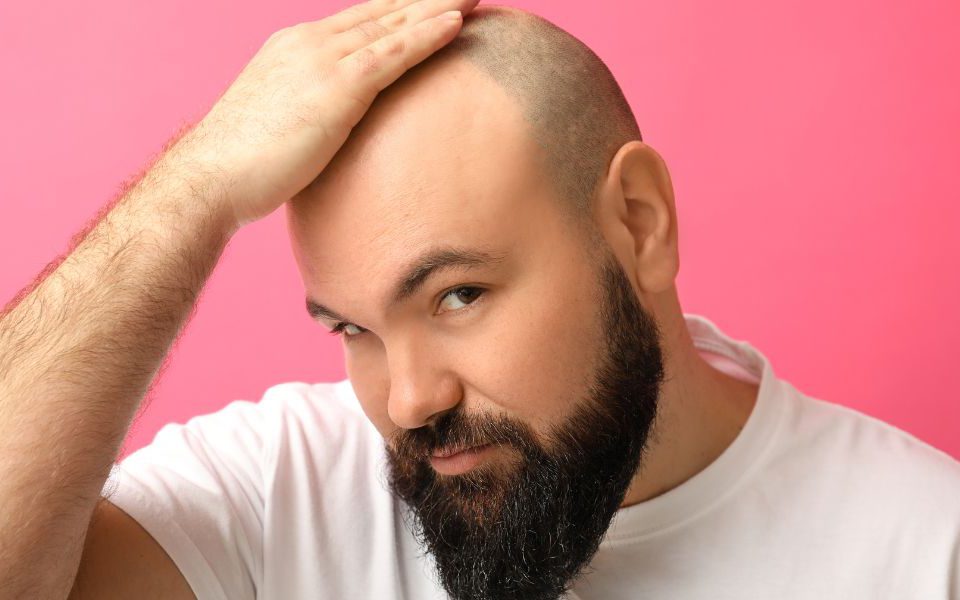- Have any questions?
- +91 80815 98454
- pinnaclepswh@gmail.com
Unveiling the Beauty Secret: Fractional CO2 Laser Treatment for Stretch Mark Removal

Hair Transplant Book Online Appointment
January 9, 2023
Restoring Confidence: Amit’s Hair Transplant Experience at Pinnacle Clinic
June 29, 2023Unveiling the Beauty Secret: Fractional CO2 Laser Treatment for Stretch Mark Removal

Are you tired of those unsightly stretch marks that seem to linger no matter what you do? Well, we have some exciting news for you! There’s a revolutionary treatment that can help you bid farewell to those stubborn marks and restore your skin’s natural beauty. Introducing Fractional CO2 Laser treatment—the ultimate solution for stretch mark removal.
Whether you’ve experienced rapid weight gain or loss, gone through the miraculous journey of pregnancy, or simply want to improve the appearance of stretch marks caused by hormonal changes, this breakthrough procedure offers remarkable benefits. Say goodbye to feeling self-conscious and embrace a smoother, more confident you.
In this comprehensive guide, we’ll dive deep into the world of stretch marks, exploring their causes, and types, and how Fractional CO2 Laser Treatment can transform your skin. Get ready to discover the wonders of this non-invasive procedure that not only tightens loose skin but also improves skin tone and texture. Say hello to a quick recovery time and visible results within weeks of treatment.
If you’re ready to embark on a journey towards stretch mark-free skin, keep reading as we unveil the power of Fractional CO2 Laser Treatment. Get ready to love your skin again and regain your self-assurance. Say farewell to stretch marks and hello to a renewed, radiant you!
What Are Stretch Marks?
Stretch marks, also known as striae, are a common skin condition characterized by narrow streaks that appear on the surface of the skin. They are caused by the stretching and tearing of the dermis, the middle layer of the skin, which supports the outermost layers. Stretch marks can occur when the skin undergoes rapid growth or experiences significant weight gain or loss within a short period.
Causes of Stretch Marks
- Rapid Weight Gain or Loss: Sudden changes in body weight, such as gaining or losing a substantial amount of weight, can lead to the development of stretch marks. This is often observed in individuals who undergo rapid weight fluctuations or bodybuilding programs.
- Pregnancy and Breast feeding: Pregnancy is a common time when women experience stretch marks. The rapid growth of the abdomen during pregnancy can cause the skin to stretch and result in the formation of stretch marks. Breastfeeding can also contribute to stretch marks, as the breasts change size and shape.
- Hormonal Changes: Hormonal imbalances or fluctuations can affect the elasticity and resilience of the skin. This can make the skin more susceptible to stretch marks, especially during periods of hormonal change such as puberty.
- Family History of Stretch Marks: There may be a genetic predisposition to developing stretch marks. If your close family members, such as parents or siblings, have experienced stretch marks, you may be more likely to develop them as well.
- Aging Processes: As we age, our skin naturally loses its elasticity and becomes less resilient. This makes it more prone to developing stretch marks, particularly in areas where the skin is subject to stretching or significant changes in shape.
- Red/Purple/Blue Stretch Marks: Initially, stretch marks often appear as red, purple, or blue streaks on the skin. These colors indicate that the blood vessels in the affected area are dilated and visible through the thin skin. Red, purple, or blue stretch marks are relatively new and typically more responsive to treatment.
- White Stretch Marks: Over time, stretch marks may fade and turn into white or silvery lines. White stretch marks indicate that the blood vessels have narrowed, and the skin has lost its pigmentation. While white stretch marks are more difficult to treat, they can still be improved with appropriate interventions.
- Atrophic Skin Tissue: Stretch marks can lead to atrophy or thinning of the skin tissue in the affected area. This can result in a noticeable texture difference between the stretch mark and the surrounding skin. The uneven skin texture can be a source of self-consciousness for many individuals.
Benefits of Fractional CO2 Laser Treatment for Stretch Mark Removal
Fractional CO2 laser treatment is an effective method for reducing the appearance of different types of stretch marks. It offers several benefits for stretch mark removal:
- Improves Skin Tone & Texture: Fractional CO2 laser treatment stimulates the production of collagen and elastin in the skin, which helps to improve the overall tone and texture of the treated area. This can lead to smoother, more youthful-looking skin.
- Tightens Loose Skin: The laser energy promotes skin tightening, which can be beneficial for individuals with loose or sagging skin in the areas affected by stretch marks.
- Minimizes Scarring: Fractional CO2 laser treatment can help minimize the appearance of scars associated with stretch marks. Targeting the damaged skin cells and promoting skin regeneration, can result in a smoother and more uniform skin surface.
- Non-Invasive Procedure: Fractional CO2 laser treatment is a non-surgical and non-invasive procedure. It uses fractional laser technology to deliver precise energy to the affected area without harming the surrounding skin. This makes it a safe and convenient option for stretch mark removal.
- Quick Recovery Time: Compared to more invasive procedures, fractional CO2 laser treatment generally requires minimal downtime. The recovery period is typically short, allowing individuals to resume their daily activities soon after the treatment.
- Results Seen Within Weeks of Treatment: The effects of fractional CO2 laser treatment for stretch mark removal can be noticeable within weeks of the initial treatment. However, multiple sessions may be required for optimal results, depending on the severity of the stretch marks and the individual’s response to the treatment.
How Does Fractional CO2 Laser Treatment Work?
Fractional CO2 laser treatment works by delivering concentrated beams of fractional laser energy to the targeted areas of the skin affected by stretch marks. The laser energy creates controlled micro-injuries in the skin, stimulating the body’s natural healing response
As the skin heals, it produces new collagen and elastin, which help improve the texture and appearance of stretch marks. The damaged skin cells are gradually replaced with fresh, healthy skin tissue, resulting in a reduction in the visibility of stretch marks.
Fractional CO2 laser treatment is performed by a qualified healthcare professional or dermatologist. They will assess your specific condition and recommend a treatment plan tailored to your needs. The procedure is typically well tolerated, and any discomfort can be minimized with the use of topical anesthesia or cooling techniques.
It’s important to note that while fractional CO2 laser treatment can significantly improve the appearance of stretch marks, complete removal may not always be possible. The extent of improvement depends on various factors, including the severity of the stretch marks, individual skin characteristics, and adherence to post-treatment care.
Fractional CO2 laser treatment offers a promising solution for individuals looking to reduce the appearance of stretch marks. It provides numerous benefits, including improved skin tone and texture, tightened loose skin, minimized scarring, non-invasiveness, quick recovery time, and visible results within weeks of treatment. If you’re considering stretch mark removal, consult with a qualified professional to determine if fractional CO2 laser treatment is suitable for you.

